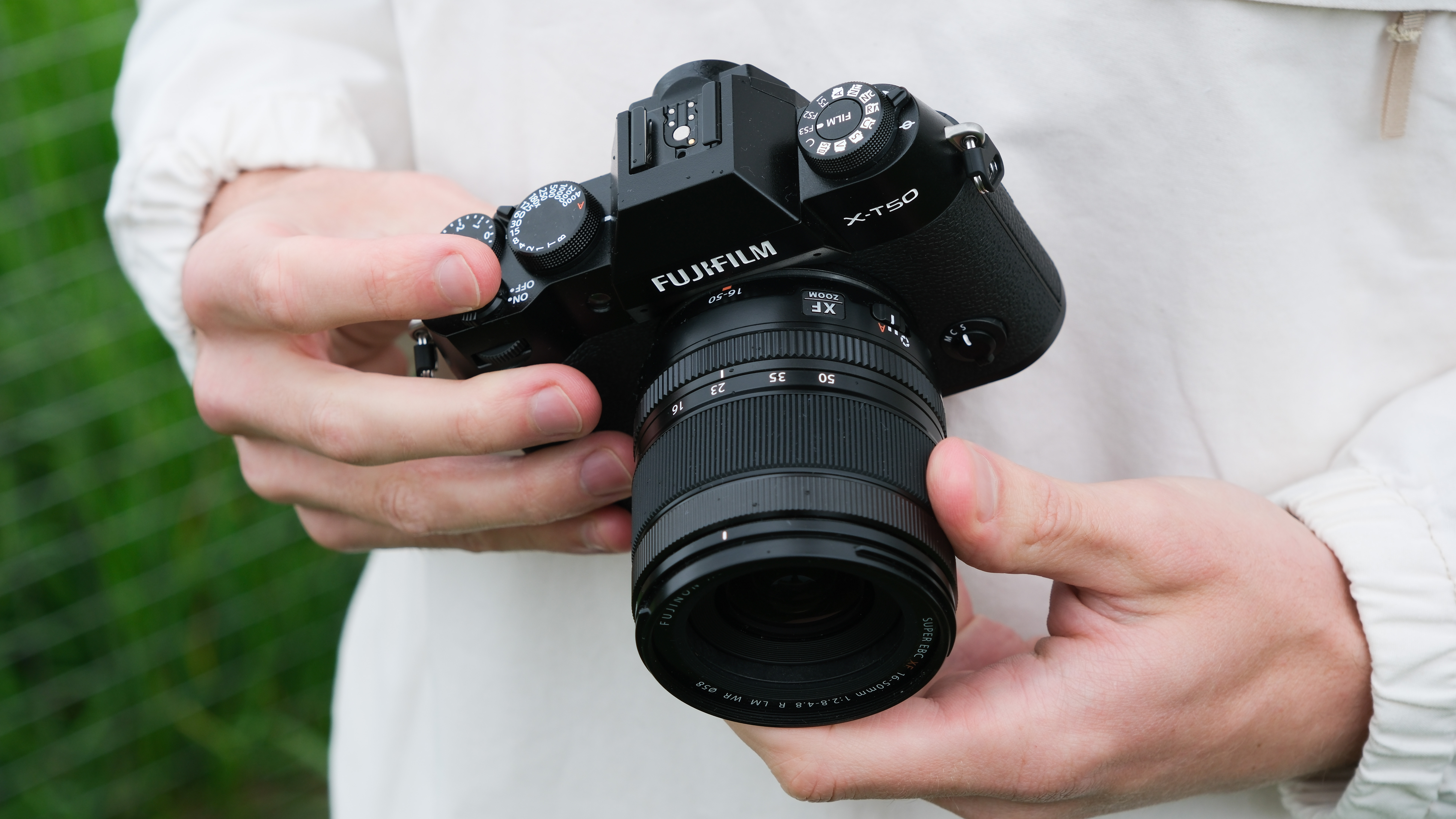
The Fujifilm XF 18-55mm lens has been the default kit lens with Fujifilm cameras for over 10 years now, and that fact alone should serve as a testament to just how good of a kit lens it is. Or should I say; was – as Fujifilm has just debuted a replacement kit lens – the Fujifilm XF 16-50mm f/2.8-4.8 R LM WR.
The transition has begun swiftly too with Fujifilm replacing the kit lens option for the Fujifilm X-T5 and Fujifilm X-S20 with the new XF 16-50m, as well as bundling it with the newly launched Fujifilm X-T50.
While the original kit lens is fairly legendary among Fujifilm fans, in recent years it has started to show its age, and with the release of Fujifilm’s latest 40MP sensors, it is unable to resolve all these pixels to their full potential – an issue that is thankfully solved by this newer lens.
But the XF 16-50mm has a tough act to follow, and the new lens is not exactly the same lens as the one it is replacing. Fujifilm has made a few tweaks here and there to its length and features, but is it risky messing too much with what many consider the gold standard of kit lenses? One thing’s for sure.
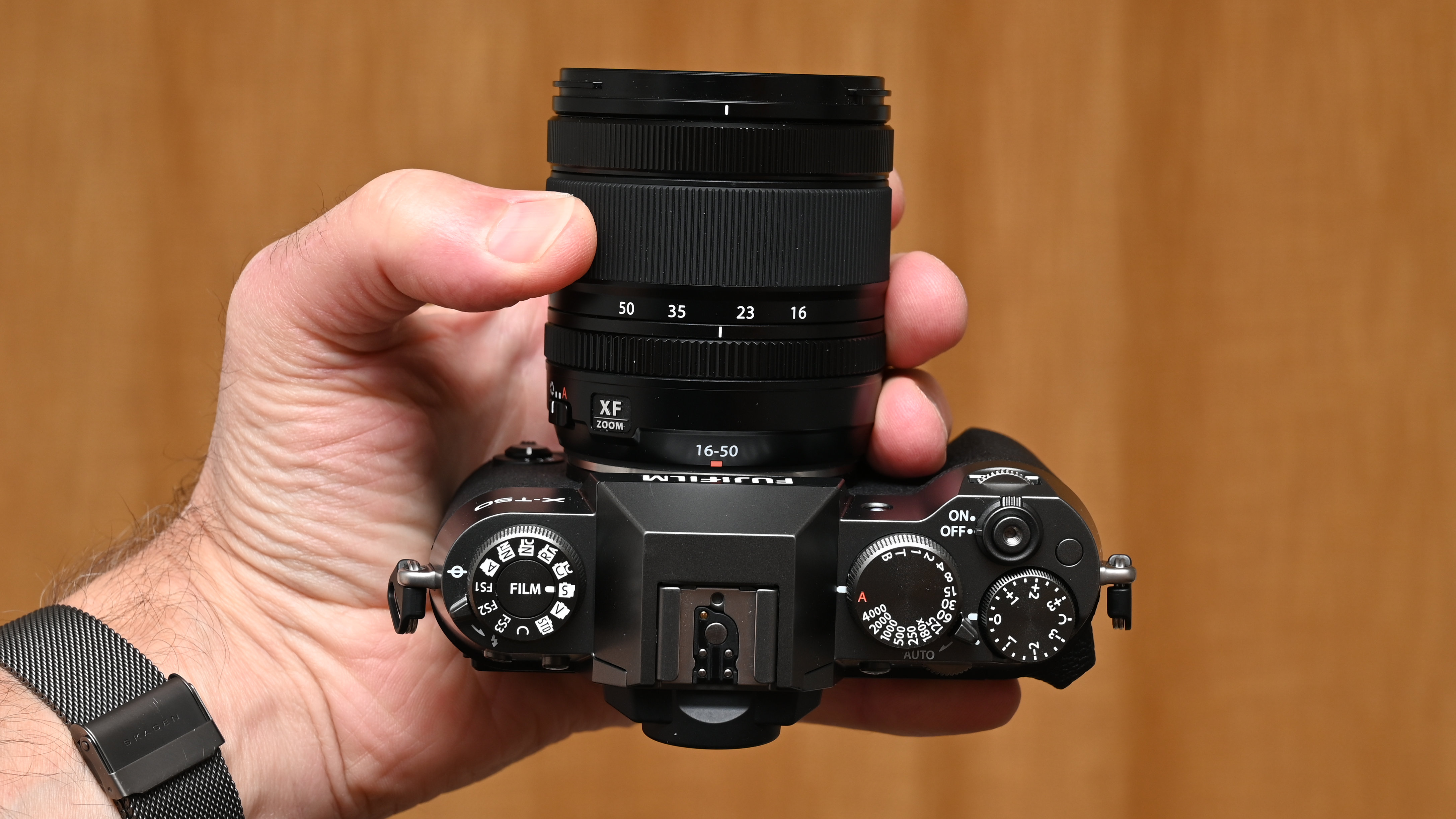
Fujifilm XF 16-50mm: Specifications
Fujifilm XF 16-50mm: Price
The Fujifilm XF 16-50mm f/2.8-4.8 R LM WR on its own is $699 / £699 / AU$1,299. This is the same standalone price as the previous XF 18-55mm. Compared to other systems this might seem quite expensive, for example, Canon kit lenses come in at less than half that price, but the build quality and optical quality of this Fuji 16-55mm is a step above most other kit lenses. The closest challenger for all-around kit perfection is the Sigma 18-50mm f/2.8 DC DN C which costs $549 / £479 / AU$699.
To get the lens closer in price to other systems, you can always buy it with a camera. The XF 16-50mm bundled with the Fujifilm X-T50 brings the price down to $400 / £350 / ~AU$600 for the lens – although obviously at a far greater overall cost.
Fujifilm XF 16-50mm: Design & Handling
Fujifilm’s lenses are some of the nicest feeling around, and the XF 16-50mm lens is no exception. The metal body feels premium and well-constructed – and has managed to shave 70g off the weight of the previous 18-55mm.
The lens has the usual three rings for focusing, zooming, and a manual aperture ring, although, like the previous lens, this only becomes an aperture ring when switched on. I have never really understood this, and I wish Fuji would just mark this ring with aperture value stops plus a lockable Auto mode like it has with other lenses.
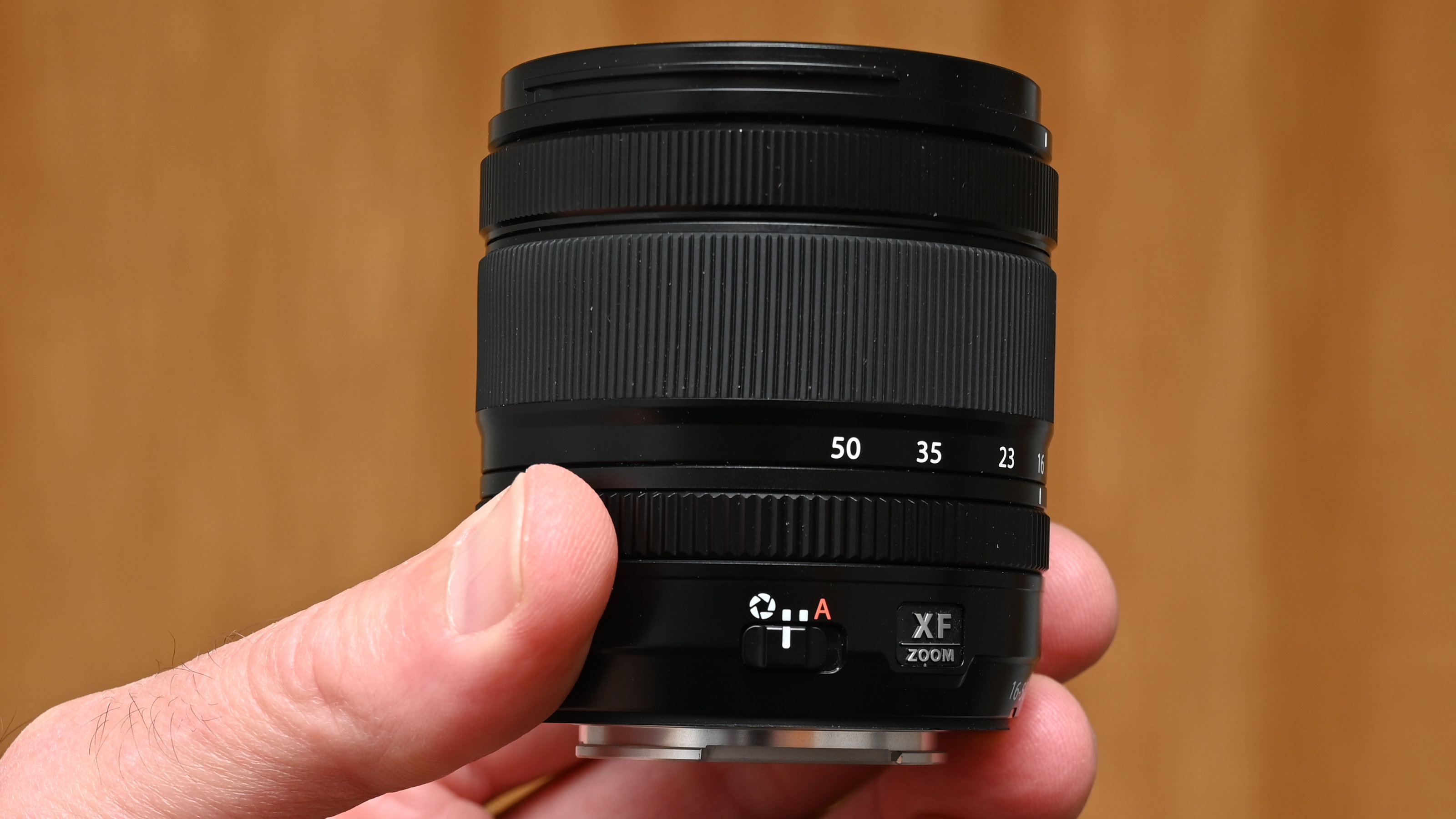
The first thing most will notice upon using the lens is the new internal zoom mechanism. Where most lenses increase and decrease in length as you go through the focal range of the lens, internal zoom lenses stay the same length throughout.
This initially does take a little time to get used to for anyone more familiar with the tactile feedback of a lens extending while zooming. For moving around, it also speeds things up slightly as there is no need to collapse the lens when not in use. However, I do find this a little slower to get started again, as it can take a second to clock the focal length, rather than intuitively knowing how zoomed the lens is from its physical position.
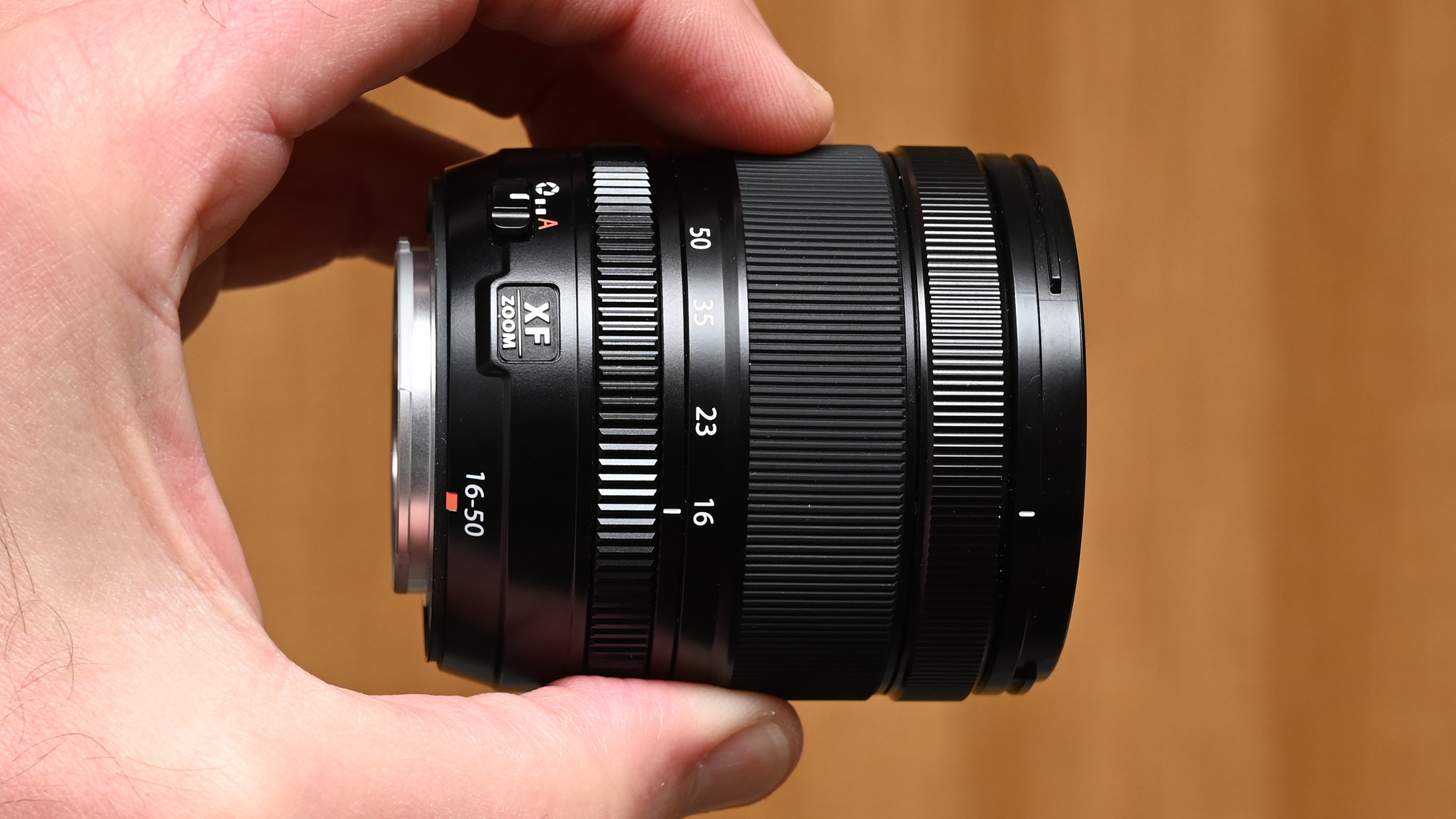
However, the internal zoom has big benefits for video makers – specifically balancing the camera. When using a rig or gimbal, the camera usually needs to be perfectly balanced to get the most stable footage possible and make it easier to hold. When zooming with an external zoom, this throws the perfectly tuned balance off and you have to start again. The internal zoom on the XF 16-50mm makes this a perfect lens for video shooters who want the versatility of zooming without the faff of recalibration.
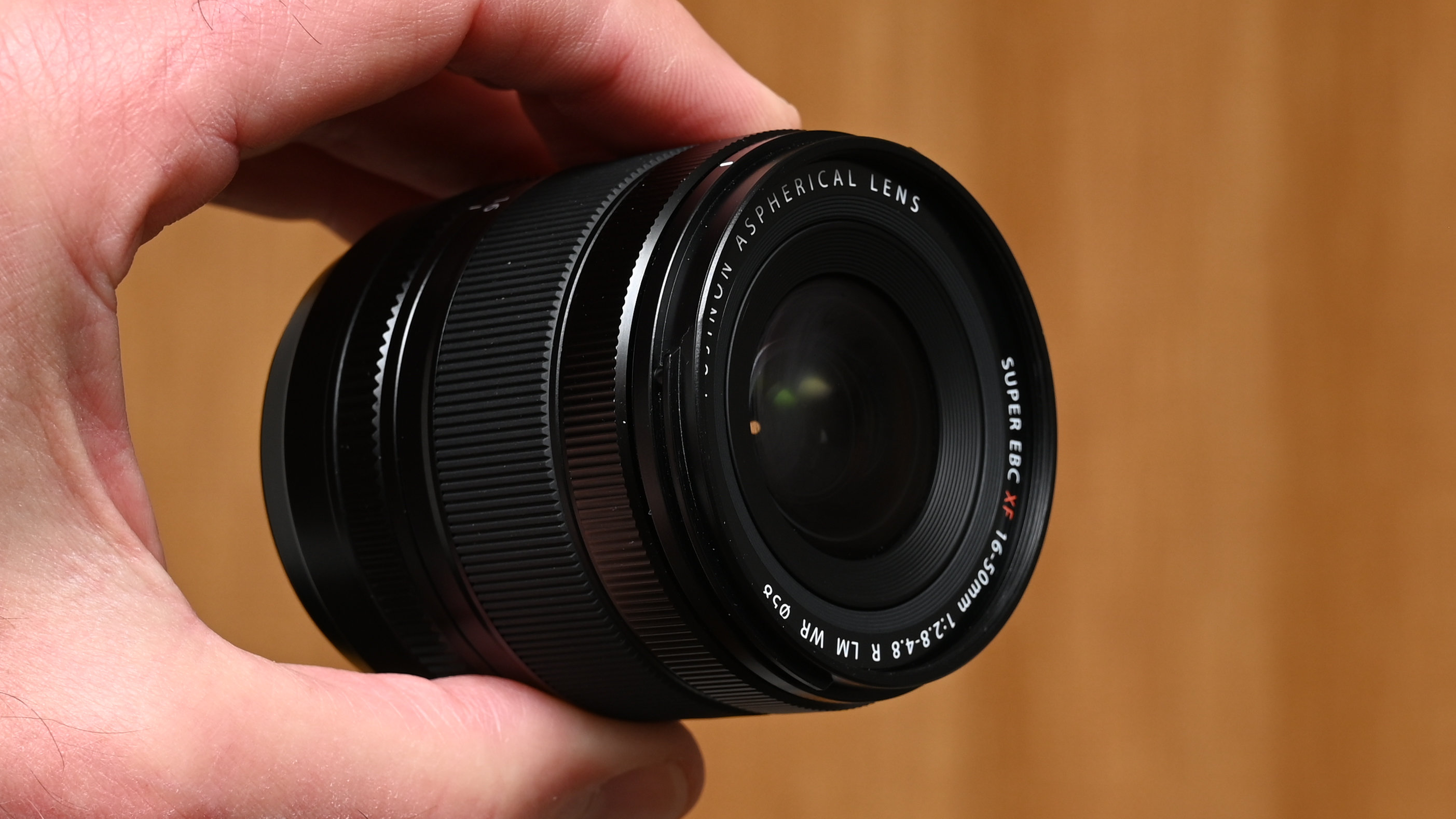
Another improvement in the lens is weather sealing, which will help keep out dust and moisture. This makes the lens a better companion for the X-T5’s weather-sealed body, although the X-S20 and X-T50 bodies are not actually weather-sealed, so you would still need to be cautious using this lens with either of those bodies in wet or dusty conditions.
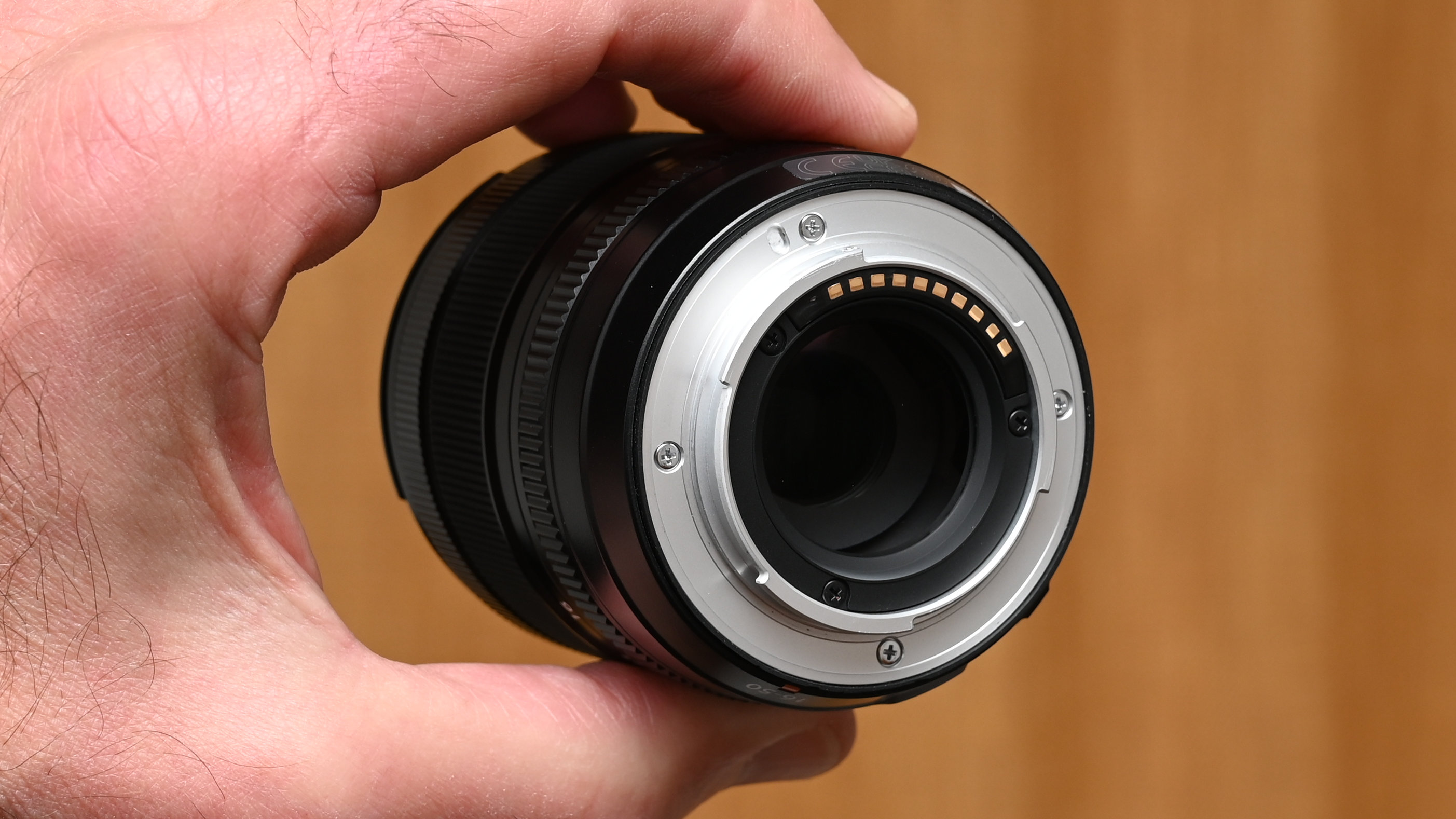
Fujifilm XF 16-50mm: Performance
The biggest difference in performance from the previous incarnation of Fuji’s kit lens comes from the change in focal length. Instead of the 18-55mm length, Fujifilm has gone for a wider length at the bottom, which is perhaps better suited to vloggers as well as street and travel photographers. Especially when you take into account that 16mm on an APS-C sensor is 24mm in full-frame terms.
At the top end, the overall length has been reduced by 5mm to 50mm (or 75mm in full-frame), which makes the lens slightly less useful for far-away subjects. But 50mm is still plenty for portraits and other situations where you might want to get a good amount of subject separation from the background.
However, not helping with subject isolation is the maximum aperture dropping from f/4 to f/4.8, which will make for a slightly shallower depth of field, but also make the lens slightly less effective in low light when zoomed in.
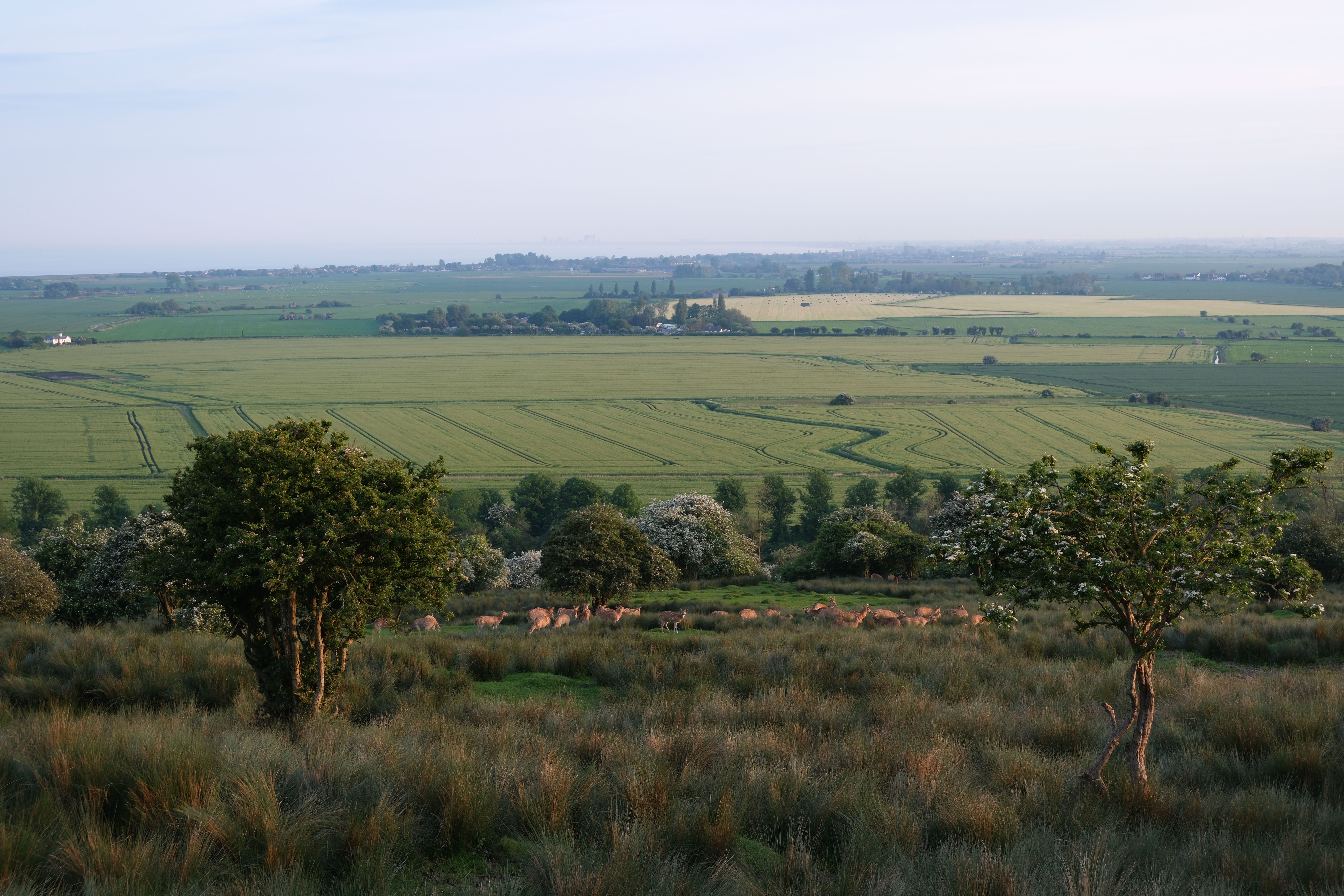
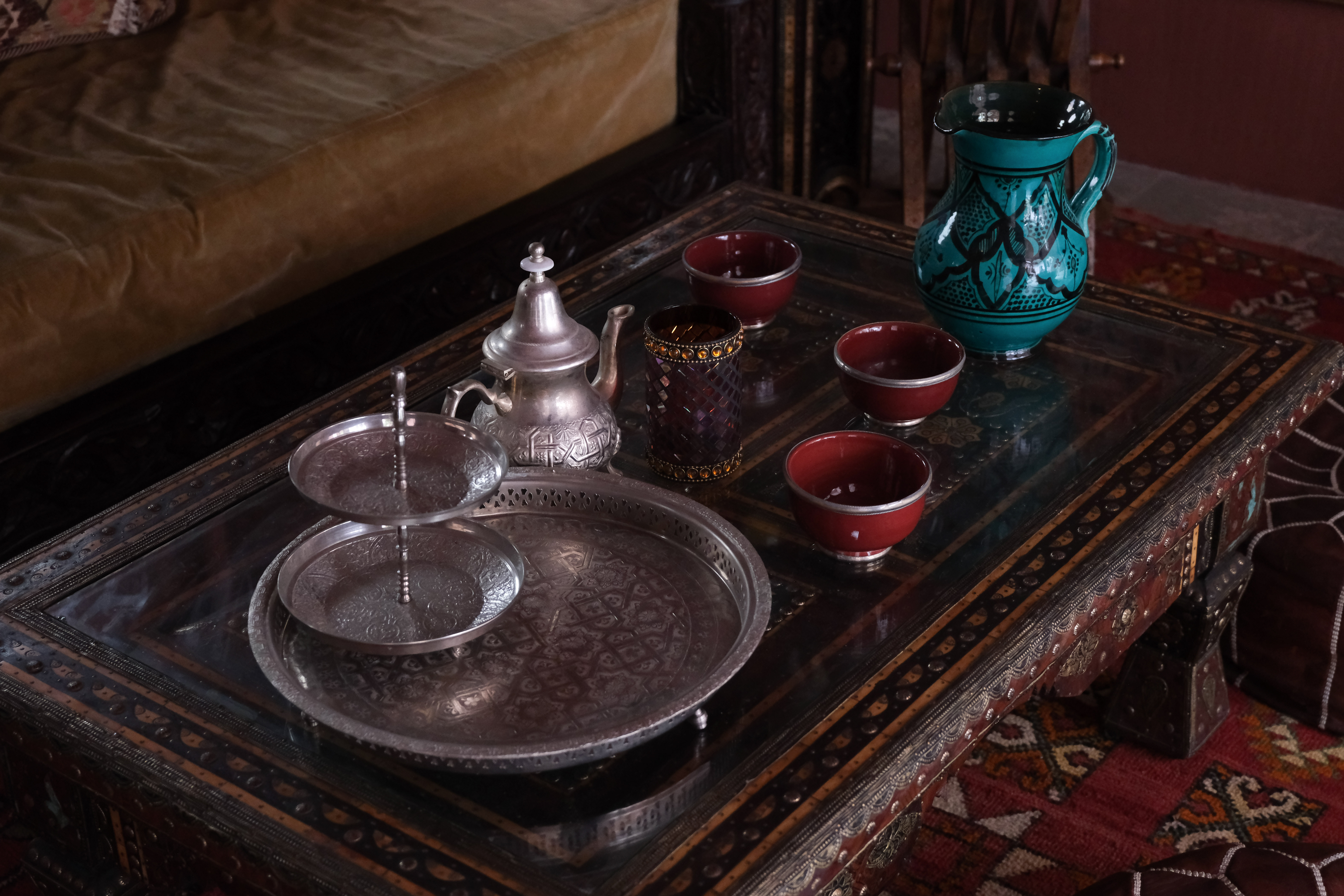
In all my real-world testing of the XF 16-50mm, I am very pleased to report that the quality of the lens looks just as good as the previous version. Images are very sharp in the center throughout the zoom range, even wide open at 16mm f/2.8. Moving into the corners, at 16mm the corners are also good if a touch soft with the aperture wide open, but stopping down to around f/4 shows quick improvement. At the other end of the lens, where the maximum aperture becomes f/4.8, the corners are also very good. An all-round great performance, and a solid improvement on the previous version.

Curiously the optical image stabilization (OIS) has not made its way over from the previous model. It’s not clear if this was necessary to achieve the internal zoom or full resolving power, or if Fujifilm just believes its in-body image stabilization (IBIS) is now good enough to make OIS unnecessary.
Most Fujifilm cameras currently on sale (except the X-T30 II and X-M5) now have IBIS offering around 5.0-7.0 stops of stabilization. In my testing, I certainly got sharp results at very slow shutter speeds when testing the lens with an X-T50 camera body.

Fujifilm XF 16-50mm: Sample images
Dull, overcast lighting for outdoor shots and low-lit interiors are challenging for any lens. This gallery of example shots shows that the XF16-50mm F2.8-4.8 R LM WR takes them in its stride, taken at Wells Cathedral in the UK.







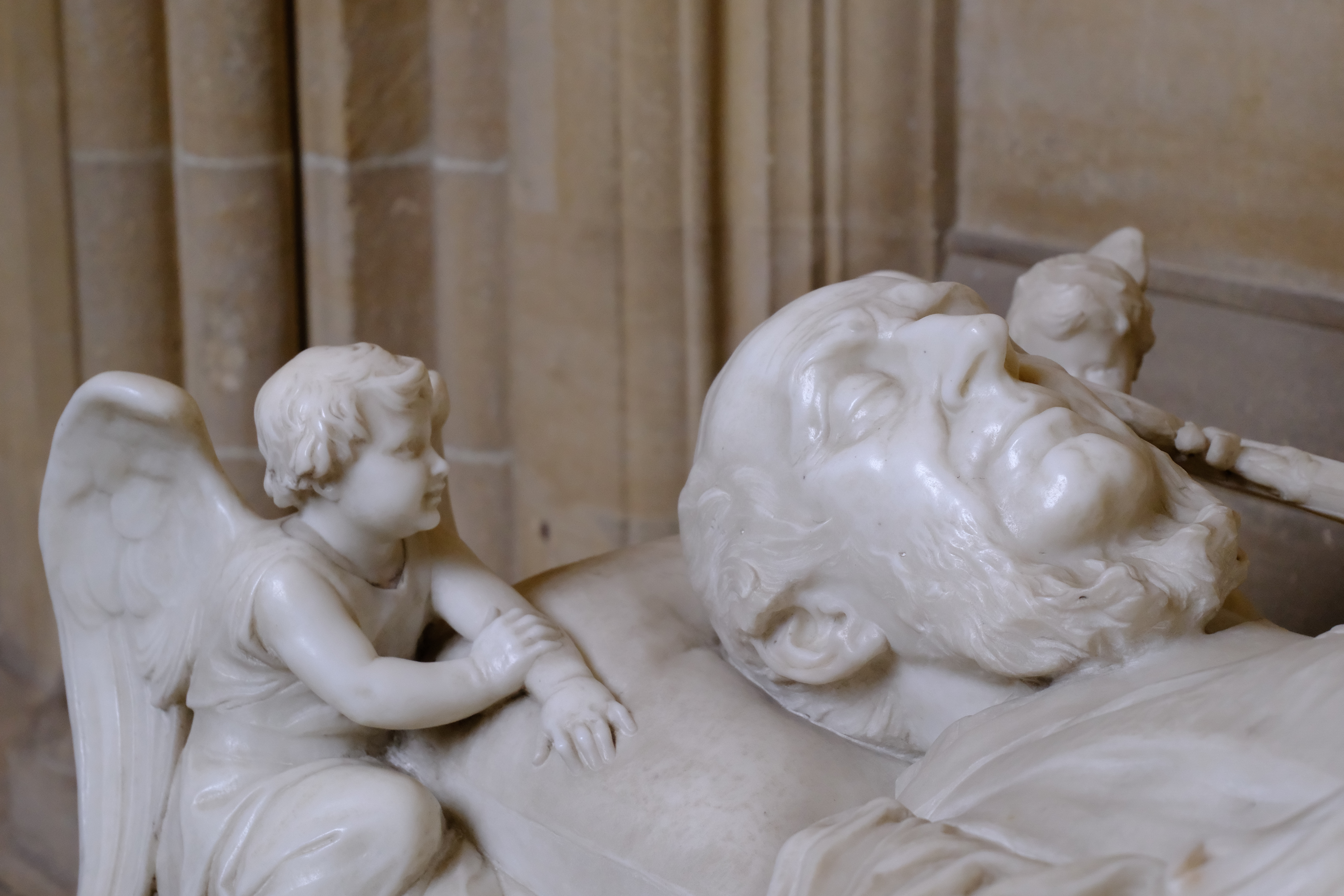
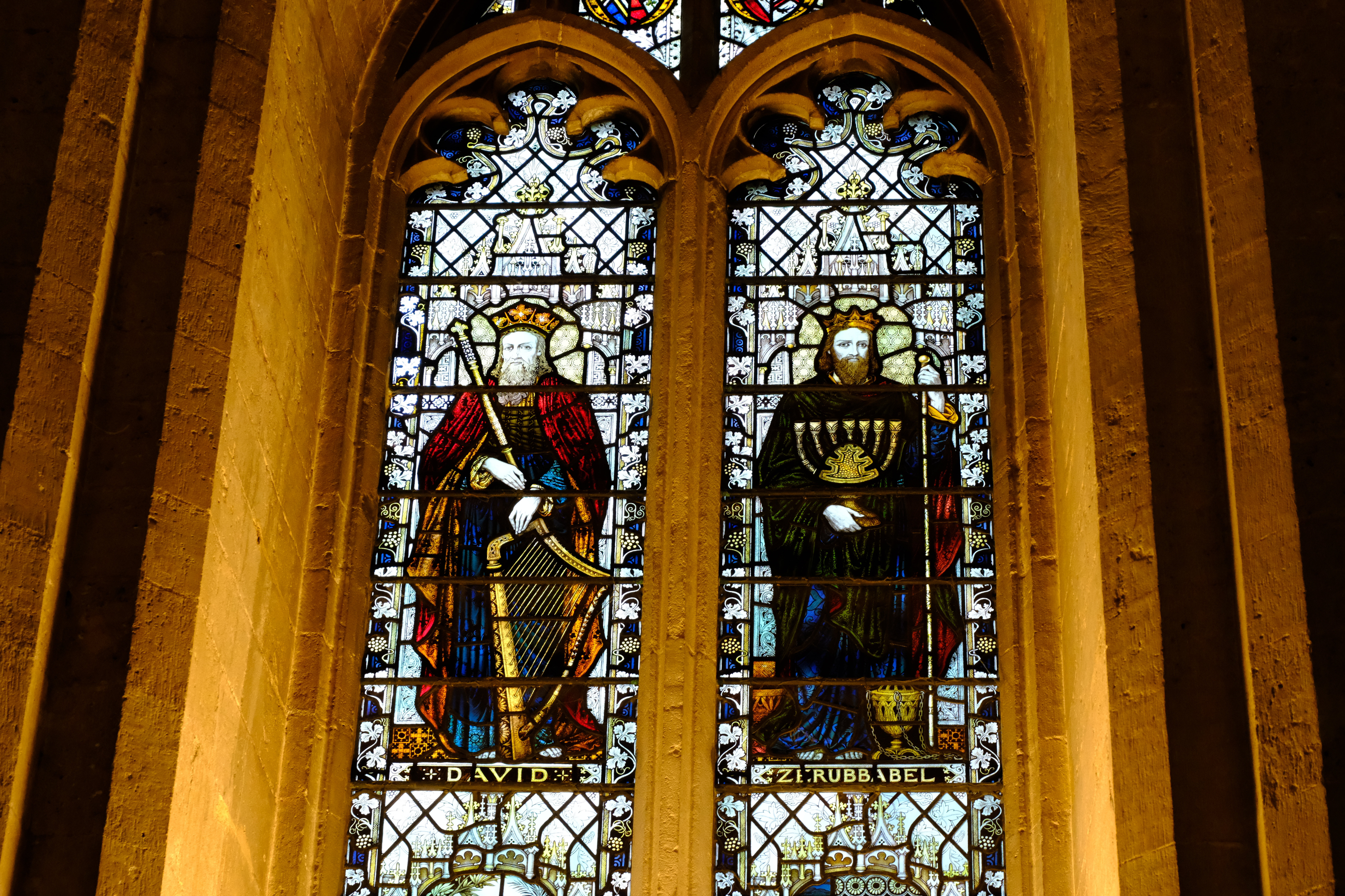
Fujifilm XF 16-50mm: Lab results
We run a range of lab tests under controlled conditions, using the Imatest Master testing suite. Photos of test charts are taken across the range of apertures and zooms (where available), then analyzed for sharpness, distortion and chromatic aberrations.
We use Imatest SFR (spatial frequency response) charts and analysis software to plot lens resolution at the center of the image frame, corners and mid-point distances, across the range of aperture settings and, with zoom lenses, at four different focal lengths. The tests also measure distortion and color fringing (chromatic aberration).
Sharpness:
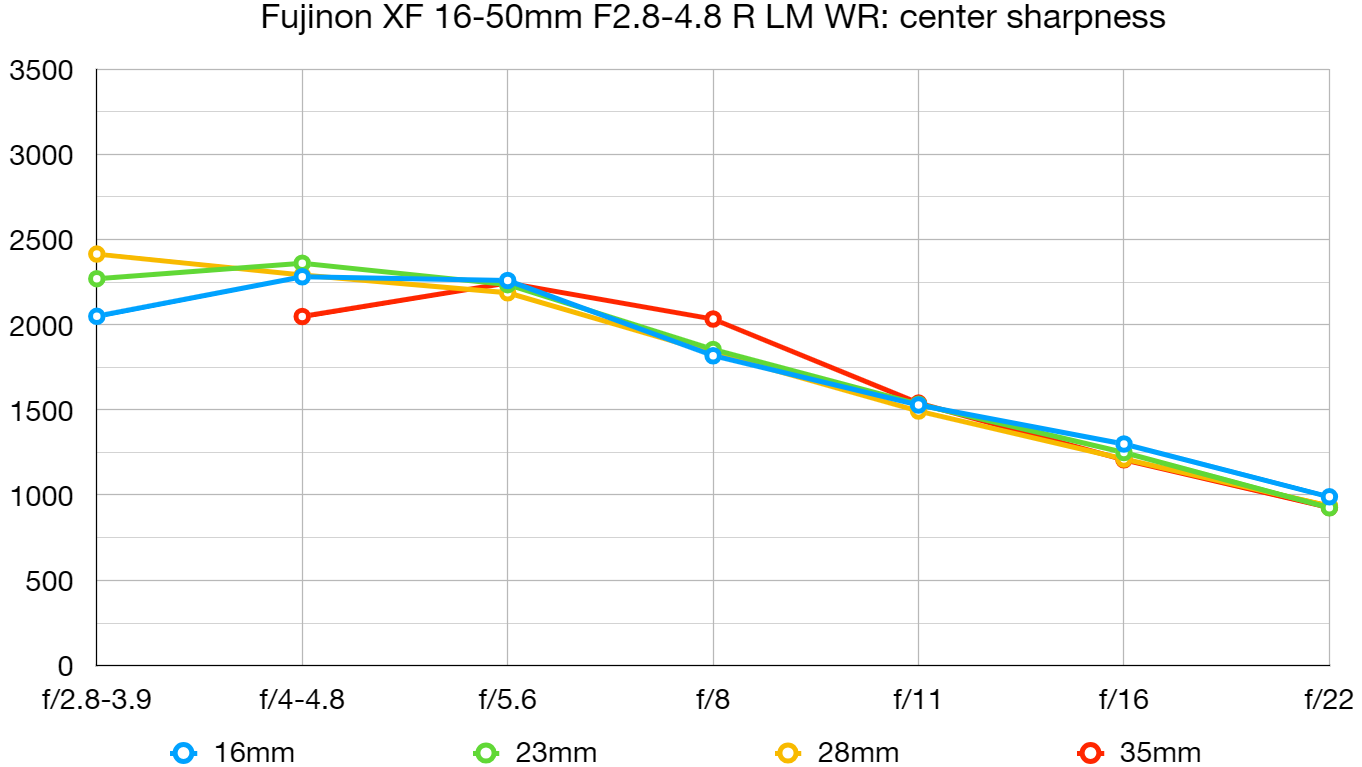
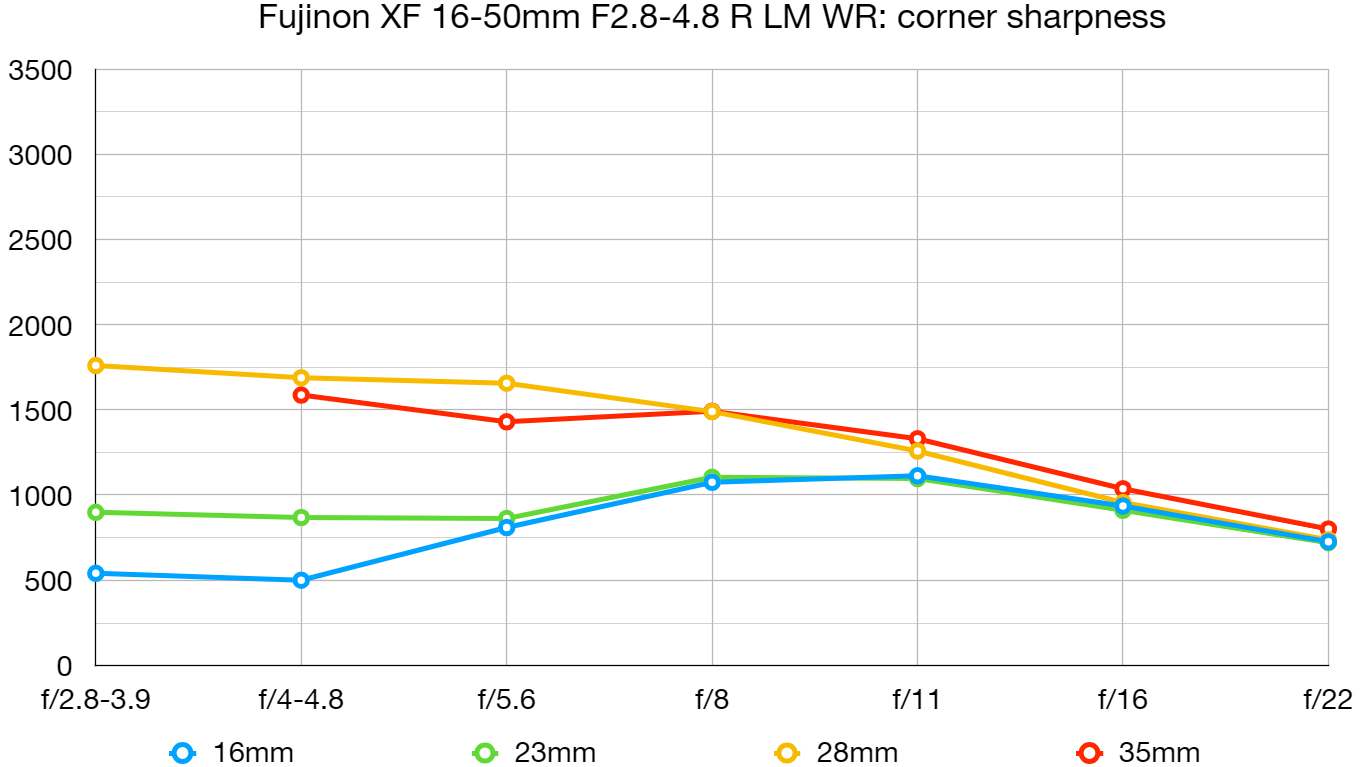
Sharpness is mostly better across the whole image frame, compared with the older XF 18-55mm lens. The only exception is in extreme edge/corner sharpness when combining short zoom settings with wide apertures, where it pays to stop down to f/8 for best results.
Fringing:

Color fringing is another facet of image quality where the new lens beats its predecessor, with remarkably little fringing even at the edges and corners of the frame.
Distortion:

As with many modern lenses designed for mirrorless cameras, there’s a heavy reliance on automatic in-camera correction for distortion. This is especially the case at the shortest focal length of 16mm, where barrel distortion is pretty extreme in the absence of correction.
Fujifilm XF 16-50mm: Verdict
The original XF 18-55mm lens has long been my favorite kit lens from any camera system. It's known for its good quality, compact design, and versatility, so its successor had a lot to live up to. But the XF 16-50mm lens stands up as a worthy sequel with a catalog of improvements – although there are some compromises that won't suit everyone.
This new lens offers a slightly shorter zoom at the telephoto end and features a narrower aperture, but compensates with a wider maximum field of view. Some might miss the extra reach, however minimal, and the reduced aperture will have a minor effect on depth of field and low light performance. But for vloggers and travel photographers, that extra 2mm at the wide end might make all the difference for framing shots.
The most significant design change is the inclusion of an internal zoom mechanism, which helps maintain a more consistent balance while shooting on gimbals, and just makes the lens more compact for moving around. Additionally, the lens is now weather-sealed which will provide much better protection against the elements – although this is also dependent on the camera body having weather-sealing.
Perhaps most importantly, the new XF 16-50mm is designed to fully exploit the 40MP resolution of Fuji's latest sensors, ensuring it can deliver exceptional image quality, and in my tests, I found that the XF 16-50mm performed admirably, with sharp image consistency across the frame, as well as good color and contrast. If you are in the market for a compact zoom, then don't let the notion that this is "just a kit lens" put you off this fantastic option.

✅ Buy this if...
- If you are after a compact "kit" zoom that doesn’t compromise on image quality.
- If you shoot a lot of video and want an internally zooming lens for consistent balance.
🚫 Don't buy this if...
- If you are looking for big reach, then the XF 16-80mm or XF 18-135mm might be better choices.
- If you require a constant aperture then check out the XF 16-80mm lens or consider a prime lens instead.







